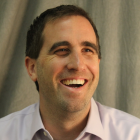
The innovator’s seat in an educational institution is fraught with challenges.

When I was in college, my favorite class without a doubt was big band. For four years, I eagerly awaited Monday and Wednesday afternoons, when I would rush to the concert hall to take my seat at the piano alongside nearly two dozen other jazz musicians. Our task was simple but not easy: to deliver a polyphony that felt improvisational without sounding cacophonous.
For me, big band music offers a reward like no other. It combines the innovation of jazz with the symphonic approach of classical music. In other words, most of the time big band musicians are asked — forced, in fact — to stay in their respective lanes, and play notes that require little challenge. But on occasion a band chart presents a particular instrumentalist with a narrow window for improvisational liberty and musical flare. If all goes according to plan, the whole band succeeds in producing a continuous mesh of complex innovation despite its considerable size.
As an educational leadership recruiter, I often assist large educational organizations with well-established cultures in their quest to hire directors of innovation. Many clients ask our firm to create opportunity statements that outline bold frameworks appealing to avant-garde visionaries of pedagogy. Yet, time and again countless experts and thought leaders who apply for these enticing jobs fall flat during the final round of the hiring process.
Divergent Approaches — Team vs. Solo
I used to think that something was inherently wrong with our hiring model. Why were so many highly respected thought leaders coming up short? Why were proven leaders of innovation at other institutions — often smaller schools or consulting groups — unable to land a gig in a bigger pond? And then I remembered Edward, the guitarist from my college big band.
Edward was by far the most talented jazz musician in the band. If a few of us arrived early to practice, he’d lead an impromptu jam session, during which he’d create some truly inspirational, jaw-dropping solos. Yet when the full band started rehearsing, it was safe bet that Edward would draw the strongest ire of our band director by pushing his innovative style too far, fast, and often.
Big band music requires musicians to bide their time. Sometimes, the chart calls for long periods of mindless playing. For a gifted jazz guitarist like Edward, that wait can be particularly painful when the only task is to play repetitive chords on each beat. I can still hear our bandleader scolding Edward to stop soloing and start playing rhythmic guitar — “Choom, choom!” he’d yell, with a furious up-and-down arm motion mimicking a guitarist’s strum. Edward would fume in protest. Invariably, our bandleader would get his revenge by passing up Edward for coveted soloing opportunities. The vicious cycle repeated year after year.
Innovating Within Constraints
When a small or struggling school creates a director of innovation position, the institution is often facing a pivotal moment. Sometimes it’s about injecting new life in a stale program. Sometimes it’s about embracing disruption purely for survival —like a small jazz combo desperately needing new songs and arrangements to attract a larger audience.
But when a large, well-established school seeks a director of innovation, that opportunity is not always so straightforward. Yes, leadership wants to hear and ponder new ideas. However, the new director better check the charts everyone else is already playing. The job might require a surprising amount of “choom, choom” to support the innovation of others — especially in the early years — even if leadership is simultaneously calling for change.
One obvious question is: Why do all these bold thinkers apply for jobs at traditional educational institutions with entrenched cultures and complex systems? Reflecting back on my college days, I realized Edward’s annual return to the big band did puzzle more than a few of us. But for him, the opportunity to be a part of the largest ensemble on the grandest of stages was just too good to pass up — despite all its headaches and challenges. As fun as a small combo is, the euphoria of contributing to large-scale innovation is a feeling unmatched.
Likewise, the allure of heading up curricular innovation at a big educational institution is for many the job of a lifetime. The resources, the national exposure, and the caliber of faculty are often second to none. Yet many innovation directors fail to realize that the true chief disruption officer sits in the executive seat: in the form of the school head, principal, or president. Everyone else has to work within constraints, take direction, and respect lanes — at least some of the time, if not most of the time.
The Successful Finalists
So, who, then, are the finalists that have landed these coveted innovation leadership jobs in big educational institutions? This is where the story takes an interesting turn, at least from my empirical recruiting lens. Time and again, I’ve seen two categories of finalists succeed at a disproportionately higher rate: women, and candidates fluent in principles of diversity, equity, and inclusion (DEI).
We all know that men tend to apply for positions beyond their skill sets at a far higher rate than do women. While an inflated self-assessment can sometimes provide an initial confidence boost to press the application submit button, quite often it is an Achilles heel during the tail end of a leadership search. Those large, well-established schools are looking for empathy, warmth, and humility from their finalists. They want big ideas — but from someone who can lead from the back. More often than not in the final round, female candidates with an innovative mindset outshine their male counterparts, who with painful frequency come across as arrogant, bombastic, cold, or insincere — all non-starters in a school.
Finalists with authentic DEI skills and passions have also fared well during innovation searches, but for a slightly different reason. I have heard hiring managers describe these candidates as captivating — even when they present some of the boldest ideas possible. I’ve seen these finalists challenge fundamental norms during complex performance tasks, yet rarely are they called haughty or pompous.
I attribute these success stories to a principle that I’ve heard many times at the NAIS People of Color Conference. At an educational institution, efforts to move the needle on DEI and innovation issues face the same fundamental paradox. In both cases, faculty support these initiatives in theory but often put up resistance when asked to change their own practices.
As a result, directors of DEI and innovation have to win over minds and break down barriers before any real change can take place. Unlike division or department directors, DEI and innovation directors possess little if any supervisory power — but ironically that lack of authority is to their long-term advantage if they employ the right short-term tactics. They must learn to effect change through inspiration, not fear. They must build relationships first, and change minds second. Thus, during an innovation search, a DEI expert often knows the exact words, mannerisms, and listening techniques to make quick but substantive connections — even when sharing the most disruptive of ideas. By the end of the final round, a herd of converts are ready to sign up for an innovation journey.
Pushing for a More Diverse Pool
At a recent educational leadership summit I attended, there was an alarming report on the dearth of females and people of color pursuing degrees in a variety of STEM-related disciplines. That is a trend we must reverse, but it should not stop us from intentionally seeking a more diverse pool of candidates for some of the most important jobs in education.
There are talented pools of people ready to lead educational innovation, who often have nontraditional talents, skills, and experiences to make them better suited for the job at hand. And if your institution is large and complex — like my college band was — be extra careful in how you hire. The last thing you want to do is yell “choom, choom” at a director of innovation who operates like a solo artist — not a true member of the band.
